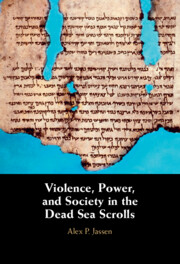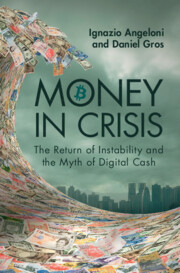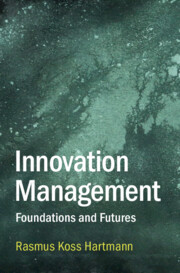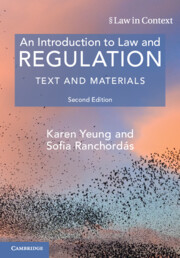Refine search
Actions for selected content:
168 results
Conclusion
- from Part IV - India and the World
-
- Book:
- Democracy and Inequality in India
- Published online:
- 11 October 2025
- Print publication:
- 30 October 2025, pp 296-317
-
- Chapter
- Export citation
4 - Labor, Gender, and Civil Society Mobilization
- from Part II - Politics from Below
-
- Book:
- Democracy and Inequality in India
- Published online:
- 11 October 2025
- Print publication:
- 30 October 2025, pp 136-198
-
- Chapter
- Export citation
4 - Sectarian Identity, Intensified Conflict, and the Turn to Violence
-
- Book:
- Violence, Power, and Society in the Dead Sea Scrolls
- Published online:
- 29 September 2025
- Print publication:
- 16 October 2025, pp 93-131
-
- Chapter
- Export citation
1 - Introduction
-
- Book:
- Violence, Power, and Society in the Dead Sea Scrolls
- Published online:
- 29 September 2025
- Print publication:
- 16 October 2025, pp 1-42
-
- Chapter
- Export citation
8 - Conclusion
-
- Book:
- Violence, Power, and Society in the Dead Sea Scrolls
- Published online:
- 29 September 2025
- Print publication:
- 16 October 2025, pp 226-236
-
- Chapter
- Export citation
14 - Liturgy, the Body, and the Senses
- from Part IV - Liturgy and the Life of the Churches
-
-
- Book:
- The Cambridge Companion to Christian Liturgy
- Published online:
- 19 September 2025
- Print publication:
- 09 October 2025, pp 251-267
-
- Chapter
- Export citation

Violence, Power, and Society in the Dead Sea Scrolls
-
- Published online:
- 29 September 2025
- Print publication:
- 16 October 2025
Chapter 7 - Student diversity, education and social justice
- from Part III - Professional practice
-
-
- Book:
- Learning to Teach in a New Era
- Published online:
- 04 October 2025
- Print publication:
- 25 September 2025, pp 229-268
-
- Chapter
- Export citation
7 - Political Legitimacy: From the National to the International
- from Part III - The Question of Legitimacy at the International Level
-
- Book:
- The Law and Politics of International Legitimacy
- Published online:
- 14 July 2025
- Print publication:
- 24 July 2025, pp 101-120
-
- Chapter
- Export citation
9 - Legitimacy and International Membership
- from Part IV - Construction of Legitimacy in International Law
-
- Book:
- The Law and Politics of International Legitimacy
- Published online:
- 14 July 2025
- Print publication:
- 24 July 2025, pp 161-172
-
- Chapter
- Export citation

Money In Crisis
- The Return of Instability and the Myth of Digital Cash
-
- Published online:
- 15 July 2025
- Print publication:
- 12 June 2025
1 - Which Disciplines Are Concerned with the Intersections of Science, Technology, and Society? What Are Some of Their Core Contributions?
-
- Book:
- Understanding Technology and Society
- Published online:
- 30 September 2025
- Print publication:
- 10 July 2025, pp 5-21
-
- Chapter
- Export citation
9 - Social cultures and belonging
-
- Book:
- Intentional Practice with Infants and Toddlers
- Published online:
- 17 June 2025
- Print publication:
- 12 June 2025, pp 227-254
-
- Chapter
- Export citation
Preface
-
- Book:
- Money In Crisis
- Published online:
- 15 July 2025
- Print publication:
- 12 June 2025, pp ix-xii
-
- Chapter
- Export citation

Innovation Management
- Foundations and Futures
-
- Published online:
- 06 June 2025
- Print publication:
- 10 July 2025
Introduction
-
- Book:
- The European Art Market and the First World War
- Published online:
- 10 April 2025
- Print publication:
- 17 April 2025, pp 1-10
-
- Chapter
- Export citation
Ageing successfully with a physical disability: the views and experiences of people ageing with spinal cord injury or post-polio syndrome
-
- Journal:
- Ageing & Society / Volume 45 / Issue 11 / November 2025
- Published online by Cambridge University Press:
- 18 March 2025, pp. 2296-2314
- Print publication:
- November 2025
-
- Article
-
- You have access
- Open access
- HTML
- Export citation
Chapter 2 - Society, Politics, and Specialized Knowledge in the Early Roman Empire
- from Part I
-
- Book:
- The <i>artes</i> and the Emergence of a Scientific Culture in the Early Roman Empire
- Published online:
- 22 March 2025
- Print publication:
- 13 February 2025, pp 39-78
-
- Chapter
- Export citation
Conclusion
-
- Book:
- An Introduction to Law and Regulation
- Published online:
- 22 November 2024
- Print publication:
- 28 November 2024, pp 388-392
-
- Chapter
- Export citation

An Introduction to Law and Regulation
- Text and Materials
-
- Published online:
- 22 November 2024
- Print publication:
- 28 November 2024
